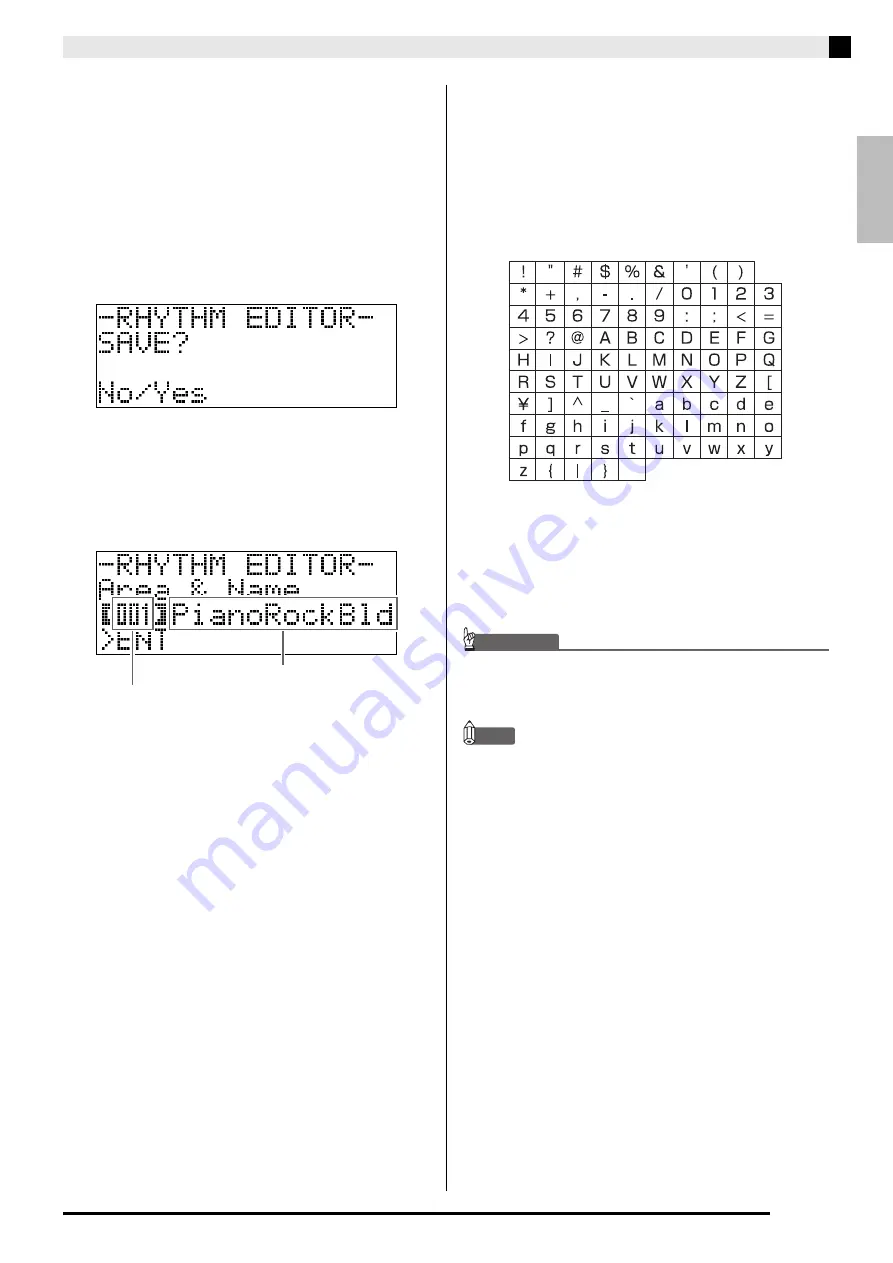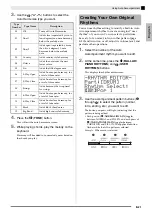
English
Using Auto Accompaniment
E-23
6.
Repeat steps 3 through 5 to edit all of the
accompaniment patterns and parts you want.
7.
After editing is complete, adjust the tempo of
the rhythm as desired.
•
The tempo you set here becomes the initial default
tempo of the rhythm.
8.
Press the
(
EXIT
) button.
This causes a confirmation message to appear asking if
you want to save your edits.
9.
Press the
(
YES
) button.
This displays a screen for specifying the user rhythm
number and rhythm name.
•
If you want to exit the editing operation without
saving, press the
(
NO
) button instead of the
(
YES
) button.
10.
Decide on the user rhythm number where you
want to save the rhythm and a rhythm name.
•
Use the
(
u
) and
(
i
) buttons to move the
cursor to the user rhythm number and rhythm name
character you want to change. Use the
(
w
,
q
)
buttons to select the number or character you want.
•
The rhythm name characters you can select are
shown below. To input a space, press both of the
(
w
and
q
) buttons at the same time.
11.
Press the
(
ENTER
) button.
This saves the data.
•
If the rhythm number where you are saving the data
already has data saved to it, a message (Replace?) will
appear on the display to confirm whether you want
to replace the existing data with the new data.
IMPORTANT!
• Saving user rhythm data to a user rhythm number
that already has data will cause the existing data to
be replaced by the new data.
NOTE
•
If the size of the accompaniment pattern or
instrument part data is too large to be edited, a
memory full message (Memory Full) will appear on
the display. If that happens, select a different
accompaniment pattern or instrument part for
editing.
Destination user rhythm number
Rhythm name






























